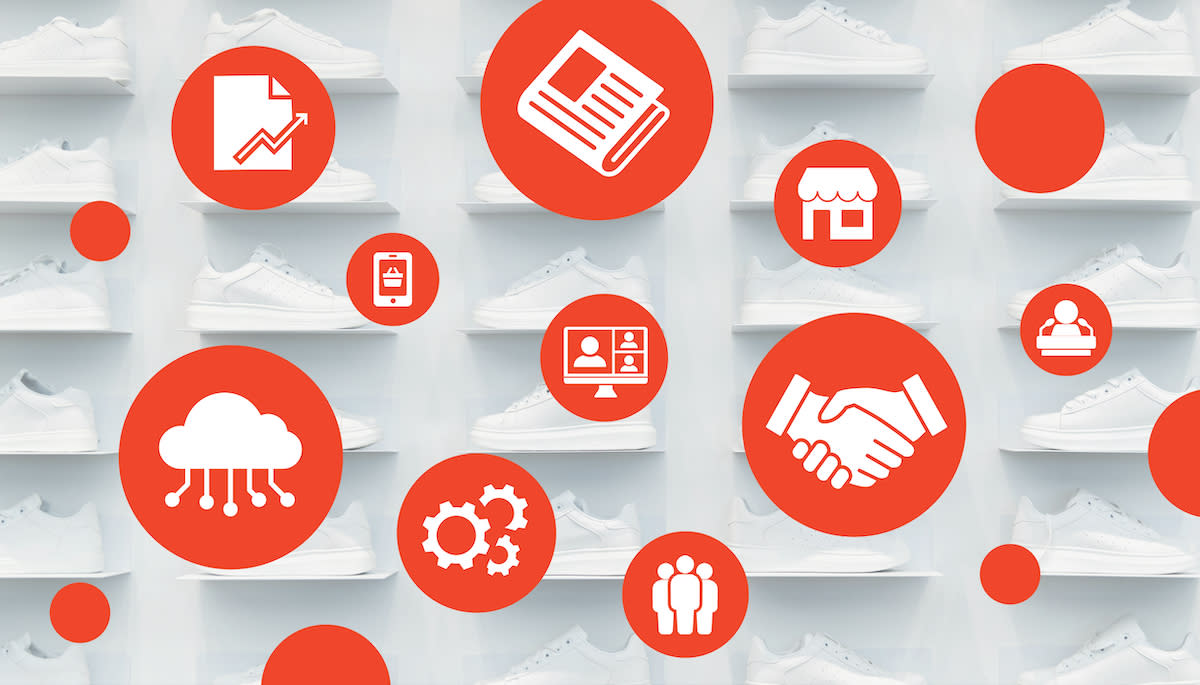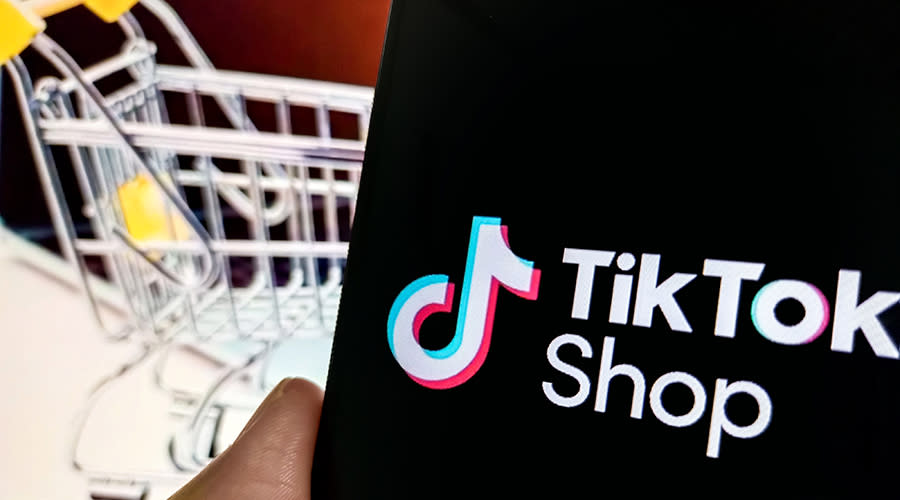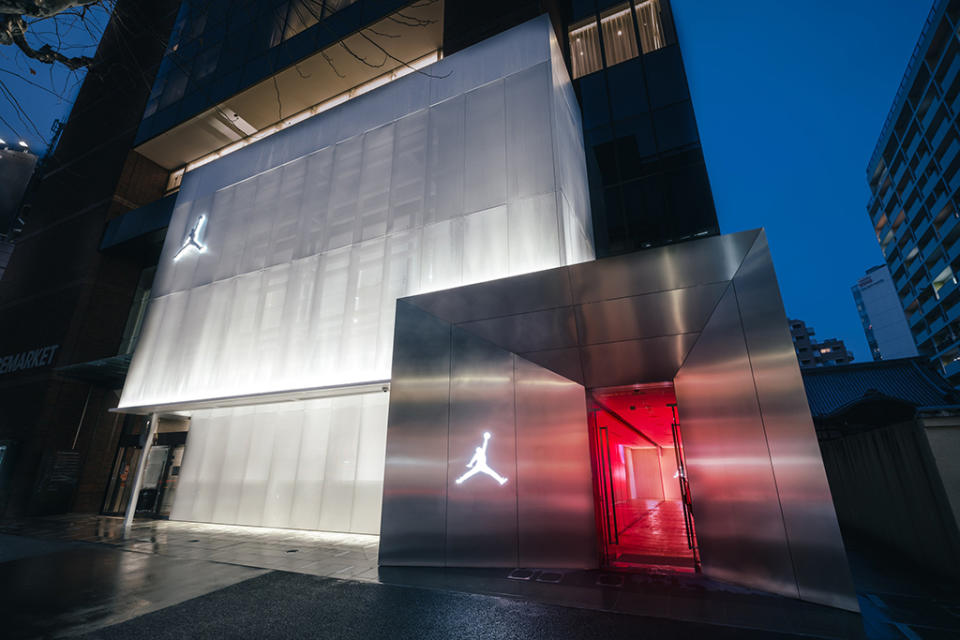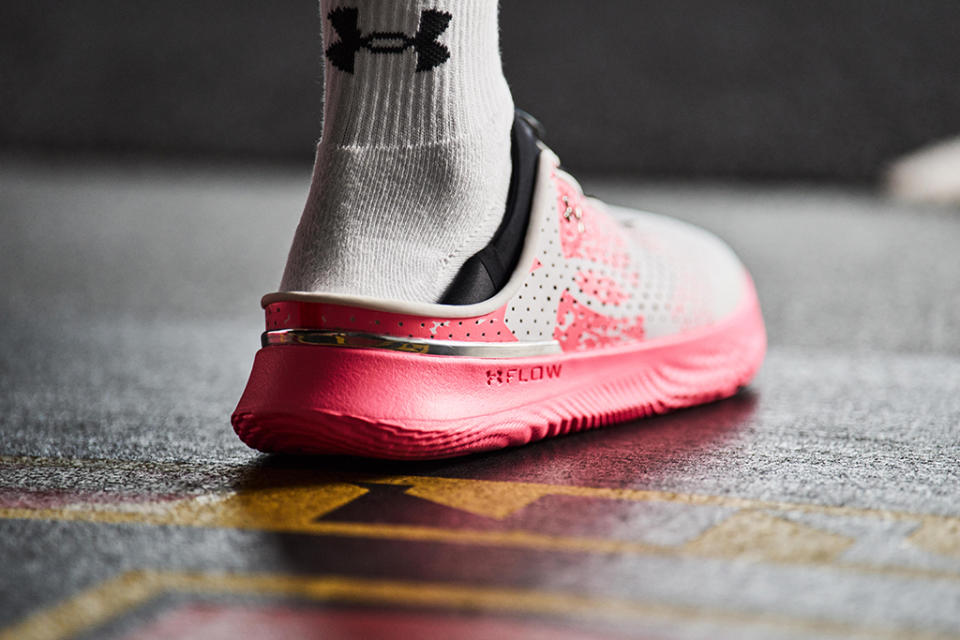The 10 Issues That Could Make or Break Business in 2024

- Oops!Something went wrong.Please try again later.
From leadership changes to an uncertain economic environment, business leaders have their work cut out for them in 2024.
Here, FN detailed 10 major business topics that should be top of mind for leaders in the footwear and retail sector this year.
More from Footwear News
The Economic Picture: Three predictions for 2024

Recession fears will calm: Economists appear to agree that a recession in 2024 is unlikely for the U.S. “A soft landing is achievable for 2024,” said Kenneth Kim, senior economist at KPMG during a session at the National Retail Federation’s Big Show in January. Jack Kleinhenz, NRF’s chief economist, also said that he does not expect a recession in 2024.
Shoe-inflation will persist: In 2023, full-year footwear prices were up 0.2 percent from 2022. This followed a 4.6 percent increase in 2022 over 2021, which marked the fastest growth rate in four decades, according to the Footwear Distributors and Retailers of America (FDRA). “It is doubtful we will see meaningful relief from stubborn footwear inflation this year,” said Steve Lamar, president and CEO of the American Apparel & Footwear Association (AAFA). Shoe-flation relief, he said, will largely depend on the elimination of shoe tariffs, such as the Section 301 tariffs on China, and stable supply chain management. Gary Raines, chief economist for FDRA, also noted the vast impact that import duties have on retail footwear prices and said that “a move to lower duties would likely have a direct, meaningful, and immediate impact on retail footwear prices for shoppers.”
Spending is holding steady: According to NRF, retail sales in 2023 grew 3.6 percent over 2022 to a record $5.13 trillion. Continued spending in 2024 will depend on job growth, which supports consumer spending. Brian Nagel, senior research analyst and managing director at Oppenheimer & Company predicted the biggest risk to consumer spending in 2024 will be the delayed effect of rising interest rates.
Making Hybrid Work: Give workers a voice

Shoe players have ramped up efforts to bring employees back into the office to promote in-person collaboration and culture — a trend that will likely continue in 2024. But to avoid alienating employees, companies should make sure they are listening to employee feedback in creating their new hybrid schedules.
An October 2023 report from Gallup found that only 12 percent of hybrid employees were asked to collaborate on a schedule for coming into the office. “Include your workforce in determining how you want to work together,” said Resume Builder chief career advisor Stacie Haller. ‘“If employees have a say in some of that, or at least they’re contributing, that’sa great first step.”
For example, Neiman Marcus created its hybrid working model based on feedback from employees. The company last year opened its “Corporate Hub” concept in Dallas, where employees can operate in a
hybrid, remote-friendly environment that facilitates digital and in-person connection with other team members. Target also allows its managers and teams to choose which office system works best for them and plans to bring its employees into its office for just four key weeks during 2024.
“Organizations can create the right business environment so that everybody knows they have to be in on certain days,” explained Carolyn McCall, founder and CEO of McCall Brand Advisors.
Some brands have ditched the office requirements altogether. Faryl Robin Gilston, founder of Faryl Robin footwear, has always allowed staff to work from anywhere. “This flexibility has allowed us to attract top-tier global talent,” she said.
The TikTok Test: Shopping on the platform will be a crucial avenue

TikTok Shop is changing the e-commerce playing field. After launching in September last year, it’s poised to be the next big thing.
A recent report from Bloomberg stated that TikTok, owned by ByteDance Ltd., aims to grow the size of its U.S. e-commerce business tenfold to as much as $17.5 billion this year. And it’s just the start, experts say. “There’s a lot more access for the creator economy today through TikTok Shop than we’ve ever seen before, and we’re seeing a lot more creators who are not necessarily influencers but they’re creating for their community. It’s driving a lot of revenue that was never predicted,” explained Liza Amlani, principal and founder of consulting company Retail Strategy Group.
Via TikTok Shop, brands and creators are able to showcase and sell products directly on the platform through a suite of in-app shopping touchpoints. According to the app, 70 percent of its users discover new brands and products on TikTok. So far, however, luxury brands are slow to get on board as the platform is still in its infancy. Why TikTok Shop is gaining so much ground is its democratic approach and low barrier to entry — it has established itself as a platform for lower-priced items. And despite hiking its U.S. seller fees from 2 percent to 8 percent this year, it is still significantly lower than Amazon, for example.
Brands should take TikTok Shop very seriously, added Amlani: “Because the number of users is growing at such a fast rate, this is going to start to scare brands and a lot are going to be left behind.”
In the Consumer Trends survey, the top product categories on TikTok Shop are apparel and accessories, as well as health and beauty and makeup. Buyers, on average, placed 1.5 orders, spending $45. In terms of demographics, Gen Z and millenials make up the majority of users, with 55 percent under age 35. But that demo is changing. The number of baby boomers who use TikTok has seen a 57 percent uptick since 2021, per consumer research company GWI. Plus, they have a higher purchasing power than Gen Z and are more likely to have bought a product or service online in the last week, according to GWI’s recent survey. Companies that have already taken advantage include Revolve (which is selling more than 20,000 items), Pacsun, Clove Shoes, Alo Yoga and more.
Selling Big Events: Grab the moments

When Coco Gauff won her first Grand Slam championship at the US Open last year, brand partner New Balance didn’t miss a beat. The company immediately released a T-shirt with the words “Call me Coco Champion” in a nod to the hashtag #callmecoco, which started trending when Gauff was rising through the tennis ranks at the age of 15.
By homing in on the emotion, New Balance capitalized on the moment. It’s a move brands should take into 2024 as the year is full of tentpole events, including this month’s Super Bowl and NBA AllStar Weekend, as well as the Summer Olympics in Paris. “It’s about rich storytelling about the human spirit, overcoming adversity — that’s where brands will be heading,” explained Marc Beckman, co-founder and CEO of marketing agency DMA United. “The stories that are compelling show the human side of talent.”
While Beckman admitted it can be tough for brands to break through the noise around big cultural moments, he recommended that at the events and digitally, brands take risks to be memorable. “Leverage emerging technologies onsite to create a superfan experience. Brands can offer a fully immersive experience that accesses limited edition merchandise. That could also continue after the All-Star game, for example,” he said. “Brands need to think out of the box, where the event could be the hub for everything, but the activation should be before and after.”
For a more organic approach, designer Marina Larroudé — who has had major shoe spottings over the last year (like Taylor Swift wearing her Kate Hi boot at a Kansas City Chiefs game) — said it’s all about setting yourself up for success. While she does not pay for celebrity placements, she works closely with a VIP dressing agency in L.A. And at times, Larroudé sends out samples from her home on a day’s notice. “We’re always on top of it and people can count on us,” she said. “When a situation presents itself, you have to be ready to jump right in.”
The Brick-and-Mortar Formula: Small, intentional

At NRF’s Big Show last month, industry experts and executives outlined what they see as the store of the future.
Local experiences: For Marcelo Trevisan, senior director of global planning at Jordan Brand, the future of the label’s retail stores takes shape in its new World of Flight concept in Shibuya, Japan. He said this shop is meant to transport customers into the world of basketball culture and features elements meant to connect with local consumers, including paintings from artists in the area and region-specific sneaker launches just for that store.
Smaller shops: In general, shoe brands are opting for smaller-concept stores that showcase top-tier product as well as unique experiences for specific regions. “They’re interesting because they’re smaller square footage, so they’re much more productive,” said Jane Hali & Associates analyst Jessica Ramirez. “And they are hyperactive in that you can use those stores to ship to the consumer locally.”
An intentional footprint: When it comes to expanding brickand-mortar, Rothy’s president Dayna Quanbeck said that her goal was to blend e-commerce with an intentional physical footprint. She likened her thinking to a “Goldilocks and the Three Bears” sort of dilemma. “One has too many stores, one is trying to make it online, and there’s one in the middle that has a diverse robust business that can reach customers where they are,” she said, describing three approaches for retail. “Those [in the middle] are the ones that will win in the future.”
All In on AI: How it will reshape the biz

Artificial intelligence seemingly came out of nowhere last year with the rise of generative AI (GenAI) modeling platform ChatGPT. As 2024 heats up, footwear retailers and brands should stay up to speed on the technology and its uses. Here are a few new insights.
Consumers are optimistic: According to KPMG, consumers are optimistic about the benefits of GenAI as the technology becomes more pervasive. According to the survey, seven in 10 consumers believe its benefits outweigh the risks. The survey also found that nearly half of consumers feel it will be extremely or very helpful in protecting personal data from misuse (47 percent) and identifying fake reviews (46 percent).
Shoppers believe it can help with the retail experience: In a survey by global retail technology partner Intellias, 44 percent of respondents noted that AI has helped retailers create more personalized shopping experiences. This sentiment was even more pronounced among younger generations, with 68 percent of millennials and 59 percent of Gen Zers echoing this view.
Shoe companies are jumping in: For footwear and fashion brands, AI is becoming part of comprehensive strategies aligned with larger corporate goals. At Saks, for example, the retailer is making AI investments as part of a carefully constructed strategy, chief operating officer RJ Cilley noted in a recent interview with FN. Cilley also mentioned that Saks is doing so because it is “committed to delivering the premier luxury shopping experience to our customers.” At Nike, CEO John Donahoe said on the company’s most recent earnings call in December that it will increase automation and speed from data and technology as it pushes forward on its goal to save up to $2 billion in costs over the next three years.
Innovation Hub: Prioritize fresh designs over technology

Tech-loaded super shoes got the running industry talking in 2023, and Deckers Brands’ upcoming “super sneaker brand” has insiders curious. These innovations come at a time when consumers are demanding newness more than ever.
Matt Powell, an advisor at Spurwink River and senior advisor at BCE Consulting, said the industry is looking at innovation incorrectly. Although performance-minded athletes are gravitating to tech, the more everyday consumer just wants something new. “Over half the U.S. sneaker business is sport lifestyle, meaning not intended for sport,” Powell said. He pointed to the Nike AlphaFly 3 running shoe, meant to help people run 4 percent faster. “Your weekend runner isn’t looking to go 4 percent faster,” Powell said. “That doesn’t mean anything to them.”
Powell applauded brands such as Hoka and On for delivering distinct looks and also touted recent efforts from New Balance, Salomon, Altra and Adidas Terrex.
To create innovative footwear, podiatrist and foot and ankle surgeon Dr. Zach Thomas recommended companies use existing technologies to make something new. As an example, he called out Under Armour’s SlipSpeed, a performance training shoe with a convertible heel design that launched in late 2022.
“It’s an interesting concept: a sandal, a slip-on and a gym shoe,” said Thomas, best known his popular “Foot Doctor Zach” YouTube channel. “There’s no new technology — neoprene upper, Boa closure, Flow midsole — but they used technologies they owned to make something unique.”
And when it comes to new tech, companies should not be afraid to outsource. Nike tapped Vibram to perfect its Ultrafly Trail shoe, which debuted in July 2023 and featured Vibram Litebase technology and MegaGrip compound. Nike also worked with Vibram for its second trail runner, the Zegama 2, arriving in May. Vibram Corp. global chief brand officer and president Fabrizio Gamberini said it will launch more new innovations this year, including a lighter iteration of Litebase and clear rubber.
The Leader Shift: How to find the new top talent

Last year brought record levels of leadership turnover — with a lot of familiar faces in the mix. Executive search firm Kirk Palmer & Associates tracked 76 C-level appointments in the shoe industry in 2023. Of that number, nearly half were promoted internally or moved over from a sister brand and more than three-quarters were footwear veterans.
However, as business volatility looks to be the norm, experts stress the importance of having fresh perspectives and thought leadership at the top. Take, for example, VF Corp. bringing in Logitech’s Bracken Darrell as CEO.
“The footwear world can be insular in who they pick to lead companies and who they exchange for the C-suite. But that doesn’t always bring about the most innovative and resourceful executives,” said Kyle Rudy, senior partner at Kirk Palmer. The company said for 2024, the trend has shifted and many clients are expanding their executive searches outside the shoe industry.
To ensure outsiders succeed in their new roles, Rudy recommends they first balance the desire for innovation with the culture of the company: “They can’t alienate the core team that’s been operating the business already.”
Yet new leaders will face intense pressure to produce quick results. His solution: “Start off by focusing on two or three things to demonstrate some successes. That will win the support of the key constituencies, both internally and externally.”
DEI Next Steps: Experts weigh in

Almost four years after George Floyd’s murder sparked a long overdue racial reckoning in corporate America, the lack of progress is palpable. Amid a charged political climate, highprofile critics of corporate DEI programs are raising their voices, buoyed by the Supreme Court’s controversial decision to strike down affirmative action in college admissions.
As a result, CEOs are becoming more reluctant to take a stand on diversity issues, while widespread cost-cutting means many existing programs are on the chopping block. Here, DEI executives talk about where the shoe industry is now and how to move forward.
The Big Picture: “People who were doing the work before 2020 are continuing to do that work. Some of the companies who jumped on the bandwagon are backtracking. You see some regression. When you look at the retailers who created [initiatives to bring in Black designers], most of them didn’t create sustainable programs that would ensure their success. It’s going to take something else to happen to bring this issue back into the forefront.” — Brandice Daniel, CEO and founder, Harlem’s Fashion Row
Accountability Matters: “Many footwear companies set a lot of goals, but we’re not seeing a lot of progress or accountable reporting about where the money went or what impact it had. That’s influencing what we’re hearing in the rhetoric from Elon Musk and [billionaire hedge fund manager] Bill Ackman. Some of their sentiments are flawed, but detractors [across the industry] feel validated by some of these callouts.” — Jarvis Sam, CEO and founder, The Rainbow Disruption; former Nike DEI chief
Driving Systemic Change: “So many organizations went programmatic. They developed apprenticeships only for communities that had a certain identity. A systemic solution says, ‘Let’s look at our processes broadly, how we hire, how we communicate to the consumer. Ingrain it and imbed it.’ If people can’t finger point, it becomes much more difficult for them to call out experiences. Systemic approaches go a long way in achieving balance.” — Jarvis Sam
Navigating Politics: Keep it real in turbulent times

In 2024, the stage is set for more global turmoil, given a contentious presidential race in the U.S. and the ongoing wars between Ukraine and Russia, and Israel and Hamas.
If a shoe company wants to put out a public statement regarding global events, experts say it’s important that it come from a genuine place that aligns with existing values. “It can be jarring when it doesn’t feel genuine,” said Susannah Davda, a shoe consultant in London. “It has to appear not to be just trying to get more customers, but really tie in with the brand’s values that they are already communicating, and that their customers believe to be true.”
At the National Retail Federation’s Big Show in January, Dick’s Sporting Goods executive chairman Ed Stack recalled one such moment for his company. After the deadly 2018 school shooting in Parkland, Fla., Dick’s reduced the types of guns and ammunition it sells in stores. “We felt that it’s really important for us in certain issues, to step up and make a statement or be involved,” Stack said.
On the other hand, some shoe brands recognize their role might not be as a top commentator on political events. But even in that case, supporting employees during trying times is crucial. “The first thing that we always need to do is talk to our employees and our teammates about it,” Brooks CEO Jim Weber told FN in late October, in reference to the Israel-Hamas conflict. “We start with empathy and concern for innocent people that are affected and reaching out to our own teams and employees just to make sure they’re supported and they’re safe.”
At Allbirds, co-founder and CEO Joey Zwillinger told FN in November that he will typically communicate with employees when something happens that is “ultra significant that affects a lot of people at the company,” such as when Roe v. Wade was overturned or when Hamas attacked Israel on Oct. 7.
Martin Hoffmann, co-CEO of On Holding, also noted the importance of being there for employees. “It’s important to share a message of inclusion and to be aware that many parts of the world are currently not in good shape,” he told FN in November.
Best of Footwear News
Skechers Super Bowl Ads Through the Years: Kim Kardashian, Willie Nelson, Snoop Dogg and More
Nike's Tiger Woods Building: Everything to Know About the Two-Story Conference Center Built in 2001
Sign up for FN's Newsletter. For the latest news, follow us on Facebook, Twitter, and Instagram.

